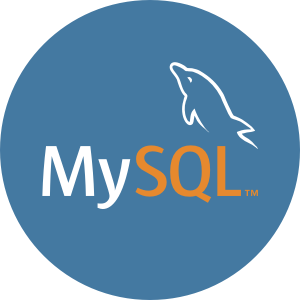Apache Cassandra vs MySQL
A detailed comparison
Compare Apache Cassandra and MySQL for time series and OLAP workloads
Learn About Time Series DatabasesChoosing the right database is a critical choice when building any software application. All databases have different strengths and weaknesses when it comes to performance, so deciding which database has the most benefits and the most minor downsides for your specific use case and data model is an important decision. Below you will find an overview of the key concepts, architecture, features, use cases, and pricing models of Apache Cassandra and MySQL so you can quickly see how they compare against each other.
The primary purpose of this article is to compare how Apache Cassandra and MySQL perform for workloads involving time series data, not for all possible use cases. Time series data typically presents a unique challenge in terms of database performance. This is due to the high volume of data being written and the query patterns to access that data. This article doesn’t intend to make the case for which database is better; it simply provides an overview of each database so you can make an informed decision.
Apache Cassandra vs MySQL Breakdown
 |
 |
|
| Database Model | Distributed wide-column database |
Relational database |
| Architecture | Apache Cassandra follows a masterless, peer-to-peer architecture, where each node in the cluster is functionally the same and communicates with other nodes using a gossip protocol. Data is distributed across nodes in the cluster using consistent hashing, and Cassandra supports tunable consistency levels for read and write operations. It can be deployed on-premises, in the cloud, or as a managed service |
MySQL uses a client-server model with a multi-layered server design. It supports the SQL query language and offers various storage engines, such as InnoDB and MyISAM, for different use cases. MySQL can be deployed on-premises, in the cloud, or as a managed service. |
| License | Apache 2.0 |
GNU General Public License v2 (for the open-source Community Edition) |
| Use Cases | High write throughput applications, time series data, messaging systems, recommendation engines, IoT |
Web applications, e-commerce, data warehousing, content management systems, business applications |
| Scalability | Horizontally scalable with support for data partitioning, replication, and linear scalability as nodes are added |
Supports vertical scaling by adding more resources to a single node; horizontal scaling can be achieved through replication, sharding, and third-party tools |
Apache Cassandra Overview
Apache Cassandra is a highly scalable, distributed, and decentralized NoSQL database designed to handle large amounts of data across many commodity servers. Originally created by Facebook, Cassandra is now an Apache Software Foundation project. Its primary focus is on providing high availability, fault tolerance, and linear scalability, making it a popular choice for applications with demanding workloads and low-latency requirements.
MySQL Overview
MySQL is an open source relational database management system that was first released in 1995. It is one of the most popular databases worldwide due to its ease of use, reliability, and performance. MySQL is widely used for web applications, online transaction processing, and data warehousing. Oracle Corporation acquired MySQL in 2010, but it remains open source software with an active community of contributors.
Apache Cassandra for Time Series Data
Cassandra can be used for handling time series data due to its distributed architecture and support for time-based partitioning. Time series data can be efficiently stored and retrieved using partition keys based on time ranges, ensuring quick access to data points.
MySQL for Time Series Data
MySQL can be used for storing and analyzing time series data, but it will not be as efficient as a dedicated time series databases. MySQL’s flexibility and support for various indexing techniques can make it a suitable choice for small to medium sized time series datasets. For large-scale time series data workloads, with high write throughput or use cases where low latency queries are required, MySQL will tend to struggle unless highly customized.
Apache Cassandra Key Concepts
- Column Family: Similar to a table in a relational database, a column family is a collection of rows, each consisting of a key-value pair.
- Partition Key: A unique identifier used to distribute data across multiple nodes in the cluster, ensuring even distribution and fast data retrieval.
- Replication Factor: The number of copies of data stored across different nodes in the cluster to provide fault tolerance and high availability.
- Consistency Level: A configurable parameter that determines the trade-off between read/write performance and data consistency across the cluster.
MySQL Key Concepts
- Table: A collection of related data organized in rows and columns, which is the primary structure for storing data in MySQL.
- Primary Key: A unique identifier for each row in a table, used to enforce data integrity and enable efficient querying.
- Foreign Key: A column or set of columns in a table that refers to the primary key in another table, used to establish relationships between tables.
Apache Cassandra Architecture
Cassandra uses a masterless, peer-to-peer architecture, in which all nodes are equal, and there is no single point of failure. This design ensures high availability and fault tolerance. Cassandra’s data model is a hybrid between a key-value and column-oriented system, where data is partitioned across nodes based on partition keys and stored in column families. Cassandra supports tunable consistency, allowing users to adjust the balance between data consistency and performance based on their specific needs.
MySQL Architecture
MySQL is a relational database management system that uses SQL for defining and manipulating data. It follows the client-server model, where a MySQL server accepts connections from multiple clients and processes their queries. MySQL’s architecture includes a storage engine framework that allows users to choose from different storage engines, such as InnoDB, MyISAM, or Memory, to optimize the database for specific use cases.
Free Time-Series Database Guide
Get a comprehensive review of alternatives and critical requirements for selecting yours.
Apache Cassandra Features
Linear Scalability
Cassandra can scale horizontally, adding nodes to the cluster to accommodate growing workloads and maintain consistent performance.
High Availability
With no single point of failure and support for data replication, Cassandra ensures data is always accessible, even in the event of node failures.
Tunable Consistency
Users can balance between data consistency and performance by adjusting consistency levels based on their application’s requirements.
MySQL Features
ACID compliance
MySQL supports transactions and adheres to the ACID (Atomicity, Consistency, Isolation, Durability) properties, ensuring data integrity and consistency.
Scalability
MySQL can scale both vertically and horizontally, depending on the storage engine and configuration.
Replication and high availability
MySQL supports various replication techniques, including master-slave and master-master replication, to provide high availability and fault tolerance.
Apache Cassandra Use Cases
Messaging and Social Media Platforms
Cassandra’s high availability and low-latency make it suitable for messaging and social media applications that require fast, consistent access to user data.
IoT and Distributed Systems
With its ability to handle large amounts of data across distributed nodes, Cassandra is an excellent choice for IoT applications and other distributed systems that generate massive data streams.
E-commerce
Cassandra is a good fit for E-commerce use cases because it has the ability to support things like real-time inventory status and it’s architecture also allows for reduced latency by allowing region specific data to be closer to users.
MySQL Use Cases
Web applications
MySQL is a popular choice for powering web applications, content management systems, and e-commerce platforms due to its flexibility, ease of use, and performance.
Online transaction processing (OLTP)
MySQL is suitable for OLTP systems that require high concurrency, fast response times, and support for transactions.
Data warehousing
While not specifically designed for data warehousing, MySQL can be used for small to medium-sized data warehouses, leveraging its support for indexing, partitioning, and other optimization techniques.
Apache Cassandra Pricing Model
Apache Cassandra is an open-source project, and there are no licensing fees associated with its use. However, costs can arise from hardware, hosting, and operational expenses when deploying a self-managed Cassandra cluster. Additionally, several managed Cassandra services, such as DataStax Astra and Amazon Keyspaces, offer different pricing models based on factors like data storage, request throughput, and support.
MySQL Pricing Model
MySQL is available in multiple editions with different feature sets and pricing models. The MySQL Community Edition is open source and free to use, while the MySQL Enterprise Edition includes additional features, such as advanced security, monitoring, and management tools, and requires a subscription. Pricing for the Enterprise Edition depends on the number of server instances and the level of support required.
Get started with InfluxDB for free
InfluxDB Cloud is the fastest way to start storing and analyzing your time series data.